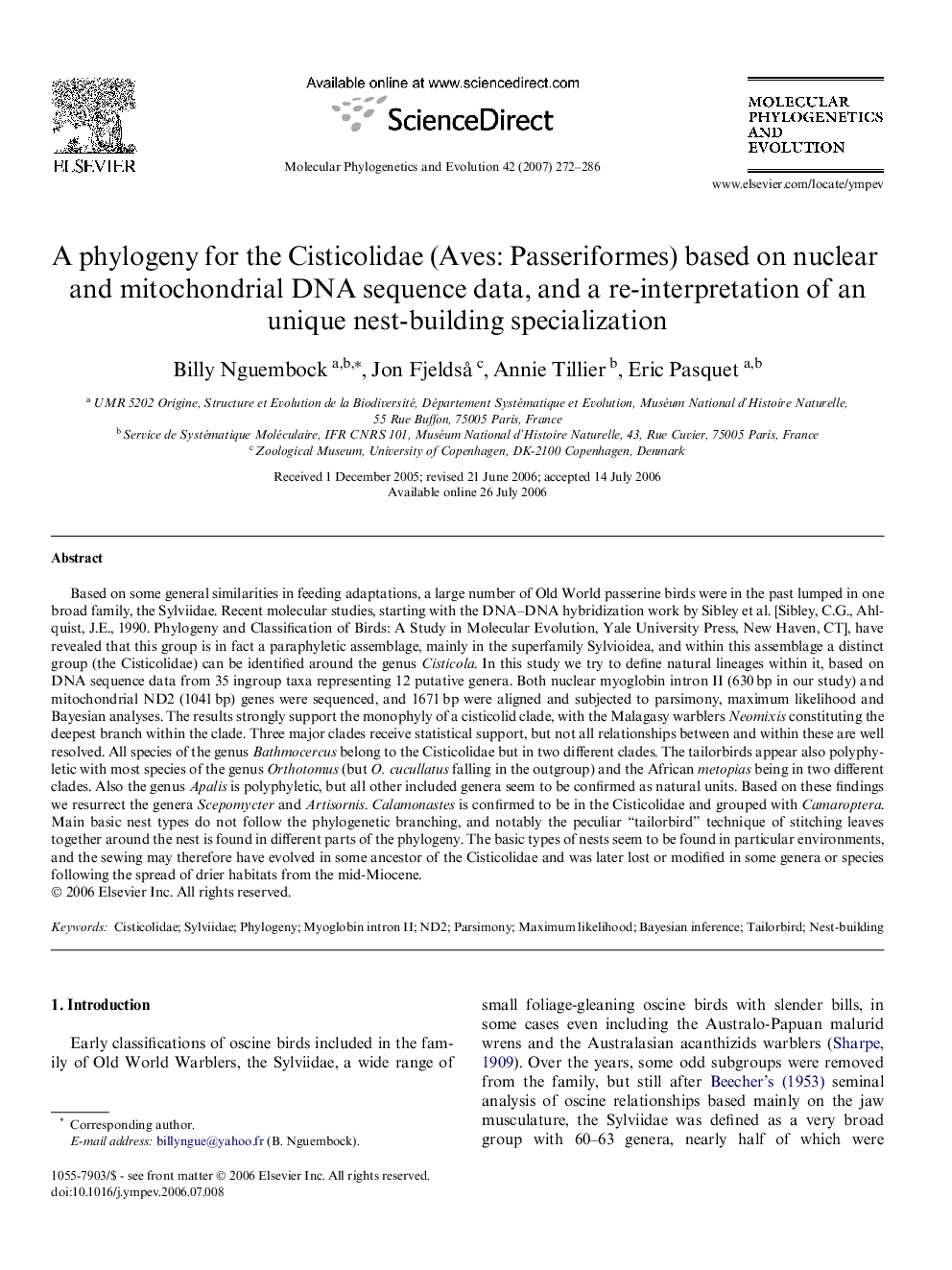| کد مقاله | کد نشریه | سال انتشار | مقاله انگلیسی | نسخه تمام متن |
|---|---|---|---|---|
| 2835687 | 1164350 | 2007 | 15 صفحه PDF | دانلود رایگان |

Based on some general similarities in feeding adaptations, a large number of Old World passerine birds were in the past lumped in one broad family, the Sylviidae. Recent molecular studies, starting with the DNA–DNA hybridization work by Sibley et al. [Sibley, C.G., Ahlquist, J.E., 1990. Phylogeny and Classification of Birds: A Study in Molecular Evolution, Yale University Press, New Haven, CT], have revealed that this group is in fact a paraphyletic assemblage, mainly in the superfamily Sylvioidea, and within this assemblage a distinct group (the Cisticolidae) can be identified around the genus Cisticola. In this study we try to define natural lineages within it, based on DNA sequence data from 35 ingroup taxa representing 12 putative genera. Both nuclear myoglobin intron II (630 bp in our study) and mitochondrial ND2 (1041 bp) genes were sequenced, and 1671 bp were aligned and subjected to parsimony, maximum likelihood and Bayesian analyses. The results strongly support the monophyly of a cisticolid clade, with the Malagasy warblers Neomixis constituting the deepest branch within the clade. Three major clades receive statistical support, but not all relationships between and within these are well resolved. All species of the genus Bathmocercus belong to the Cisticolidae but in two different clades. The tailorbirds appear also polyphyletic with most species of the genus Orthotomus (but O. cucullatus falling in the outgroup) and the African metopias being in two different clades. Also the genus Apalis is polyphyletic, but all other included genera seem to be confirmed as natural units. Based on these findings we resurrect the genera Scepomycter and Artisornis. Calamonastes is confirmed to be in the Cisticolidae and grouped with Camaroptera. Main basic nest types do not follow the phylogenetic branching, and notably the peculiar “tailorbird” technique of stitching leaves together around the nest is found in different parts of the phylogeny. The basic types of nests seem to be found in particular environments, and the sewing may therefore have evolved in some ancestor of the Cisticolidae and was later lost or modified in some genera or species following the spread of drier habitats from the mid-Miocene.
Journal: Molecular Phylogenetics and Evolution - Volume 42, Issue 1, January 2007, Pages 272–286